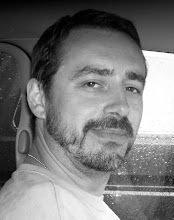 The winter months seem to lend themselves to classic horror films, to me at least, and I recently pulled out two gems from an unpacked box of videotapes. Produced in 1966 by England’s legendary Hammer Films, The Plague of the Zombies and The Reptile are period horrors set in Cornwall, a particularly beautiful part of southwest England, though both films were actually shot at Bray Studios near Windsor.
The winter months seem to lend themselves to classic horror films, to me at least, and I recently pulled out two gems from an unpacked box of videotapes. Produced in 1966 by England’s legendary Hammer Films, The Plague of the Zombies and The Reptile are period horrors set in Cornwall, a particularly beautiful part of southwest England, though both films were actually shot at Bray Studios near Windsor.Shot back-to-back by director John Gilling using the same sets, the films were originally intended for release as a double feature but were never shown that way, as the similarity in the settings was too obvious. The Plague of the Zombies ended up on a double feature with Dracula, Prince of Darkness, while The Reptile played with Rasputin, the Mad Monk (both ‘A’ pictures starred Christopher Lee and also used similar sets). In those days, they knew how to market films. Both double bills lured audiences in with free gifts – ‘zombie eyes’ or a fake Rasputin beard – in addition to offering two films for one price.
The Plague of the Zombies was the last major zombie film before George A. Romero turned the genre on its head in 1968 with Night of the Living Dead, a film that forever associated zombies with cannibalism and led to extremely gory Italian schlock-horror. A classicly-structured mystery story, Plague tells of medical doctor Sir James Forbes (André Morell), accompanied by his daughter Sylvia (Diane Clare), investigating a series of mysterious deaths in a small Cornish village at the request of former student Dr. Peter Tompson (Brook Williams). The trail involves death, voodoo, and the living dead, and leads to callous aristocrat Squire Hamilton (played with delicious menace by John Carson).
Plague is a nifty, atmospheric little chiller with an interesting subtext of class division. The Squire and his men are portrayed as rich, arrogant upper-class thugs with little concern for the lower classes and no use for them except as mindless fodder for labour. The story unfolds as a classical, almost Holmesian mystery, punctuated by several notable horrific sequences. One involves Dr. Tompson’s wife, elegantly played by Jacqueline Pearce, rising from the dead in the village’s spooky graveyard. Another, more celebrated sequence is a green-tinted dream where the earthed denizens of the entire graveyard push their way up through the mouldering ground and lumber towards their victim. The image of a reanimated corpse pushing its way up through the soil is one that has been subsequently pinched by many horror flicks, including the atrociously gory Italian Romero rip-off, Zombie.
With atmospheric camera work and settings, nicely-textured performances, and imaginative makeup, The Plague of the Zombies is one of the most enduring creations from the Studio that Dripped Blood.
 A 19th-century mystery story atmosphere also pervades The Reptile, which is narratively similar to Bram Stoker’s The Lair of the White Worm. Harry Spalding (Ray Barrett) and his wife Valerie (Jennifer Daniel) move to the cottage they inherited from Harry’s brother, who died mysteriously in an eerie scene at the beginning of the film, skin blackened and mouth frothing from some lethal venom delivered by a bite from a man-sized something. The solution to the mystery lies buried within the local mansion, home of Dr. Franklyn (Noel Willman) and his beautiful daughter Anna (Jacqueline Pearce, once again), both of whom have run afoul of a strange occult sect from the orient.
A 19th-century mystery story atmosphere also pervades The Reptile, which is narratively similar to Bram Stoker’s The Lair of the White Worm. Harry Spalding (Ray Barrett) and his wife Valerie (Jennifer Daniel) move to the cottage they inherited from Harry’s brother, who died mysteriously in an eerie scene at the beginning of the film, skin blackened and mouth frothing from some lethal venom delivered by a bite from a man-sized something. The solution to the mystery lies buried within the local mansion, home of Dr. Franklyn (Noel Willman) and his beautiful daughter Anna (Jacqueline Pearce, once again), both of whom have run afoul of a strange occult sect from the orient.
Roy Ashton’s elegant makeup on the title creature borders on iconic horror cinema, and is sympathetically portrayed like all great movie monsters. Well-shot by John Gilling and professionally acted, The Reptile is a great little horror yarn, assuming one can forget the trappings of 21st century digital cinema and enjoy inventive low-budget filmmaking.
Both films are available on DVD and VHS.

1 comment:
Intriguing article, Paul. I've put both titles in my Netflix queue. Thanks in advance before turning me on to these!
See you around a.f.j-b....
Paul Baack
Post a Comment